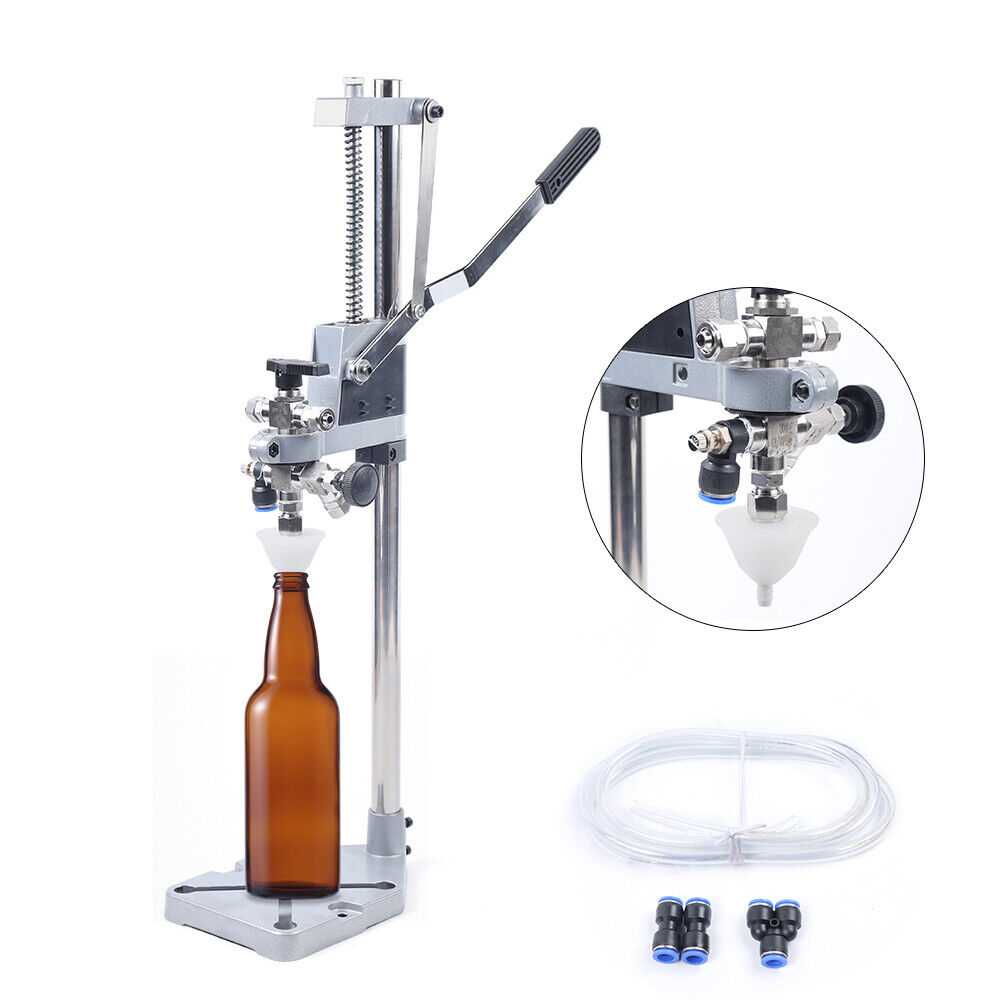Jon - if you can run your product at a very low temp, say 0 to -1C (and it
will help if you chill the glass... enough to make it worth the effort, who knows? probably not) and run at significantly over the carbonation pressure throughout the whole operation, you will fill a lot faster than in that video. Larger bottles also fill a lot faster. If you are currently operating at 4bar, you'll go a
lot quicker than me. That whole thing in the video was done at 1.5bar g and only about half a bar over the carbonation pressure.
Evacuation - well, that will depend on how long you want the beer to last. My beer is filtered, that was a very pale lager and it was going to a person who doesn't drink a lot so it needed a 4-6 month reasonable flavour stability. I'm not personally happy with straight "purge" options for oxygen removal, fillers that use it have constantly higher DO levels than PE fillers - they're probably good enough at the 4bar you're working at, &/or perhaps with a tube to the bottom of the container... but the CP filler in question has no tube, so the purge isn't as effective, and also (even if it existed in a filling situation, which it doesn't) any C02 blanketing effect is nullified because the product is running down the sides of the container to get to the bottom. This filler isn't meant to be a "packaging quality" chunk of equipment - its meant to fill without fob and get the beer home in decent condition to be drunk quickly. If you want to use it as a way to package beer that you expect a shelf life from, you'll need to be a lot more careful.
Honestly - i dont think this is anything like the solution you are going to need. Hell, they're relatively cheap - grab one and experiment by all means - buts its a growler fill option to save bars time and wasted beer, not really a packaging solution. Mind you - at $350 per day for your current filler. Thats half a dozen of these things, a ton of "over cautious" and a casual worker to help out... and you're still ahead.
btw - have a look here
http://beerinnovations.com/beerequipment/PET/novotap for the people who designed these things (and their new and improved model) rather than the cheap arsed chinese rip off I am using. If you are patient (the website is a nightmare to navigate) there are quite a few videos of the fillers in action, times for fills, installation applications and stuff like that.
Cheers
Dan
btw - have you shoved a data logger in a sample bottle through your pasteurisation process?? I haven't had a real look at the numbers or anything, but my gut feel says you are throwing a lot more PUs at your beer than needed and you might be affecting the flavour needlessly.







